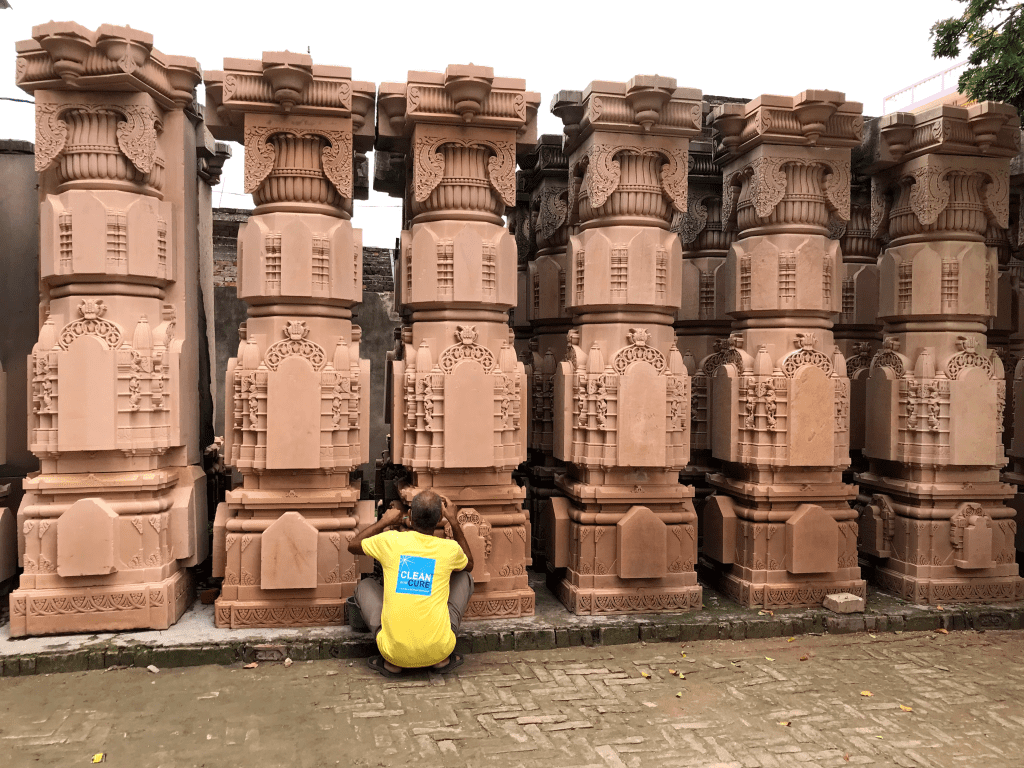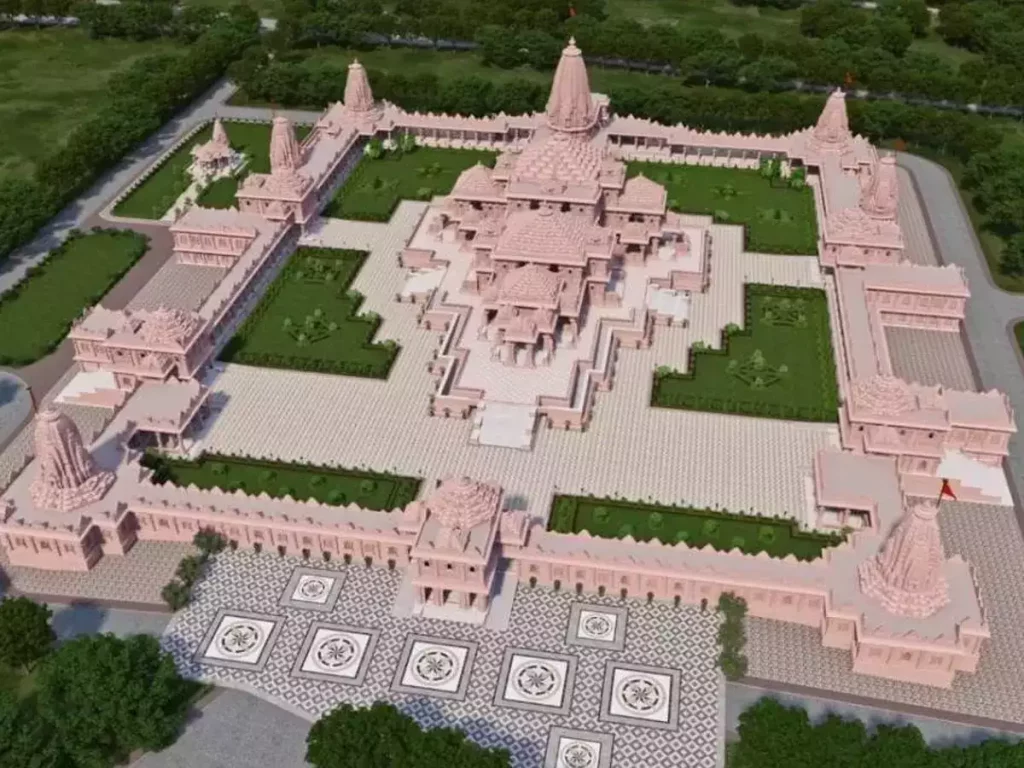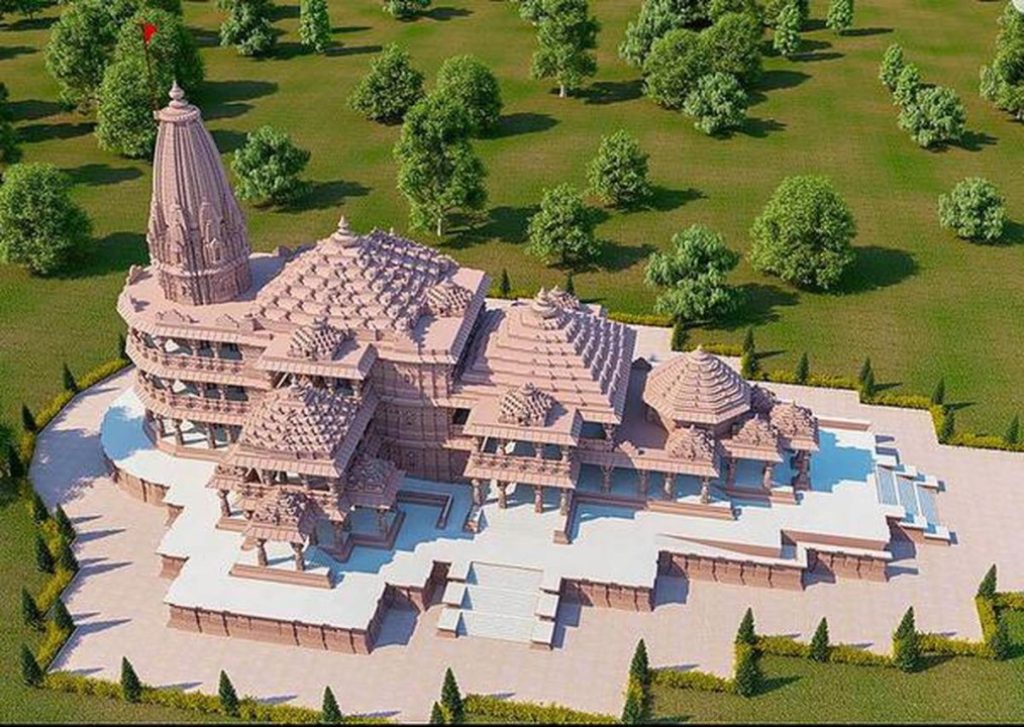Green Reverence: The Sustainable Marvel of the New Ram Mandir Architecture in Ayodhya
The construction of the Sustainable Ram Mandir in Ayodhya stands not only as a testament to cultural and religious significance but also as a beacon of sustainable architectural marvel. This article delves into the sustainable features, design intricacies, and construction details of the new Ram Mandir, highlighting its commitment to environmental preservation and self-sufficiency.
Construction Details:

Entrusted to Architect Chandrakant Sompura, the design reflects the “Nagara style” of architecture, with modifications like five domes and a shikhara for enhanced devotee accommodation. The temple’s foundation incorporates two lakh bricks inscribed with ‘Sri Rama,’ collected from different parts of the country three decades ago, adding a unique touch to the construction process.
Sun-themed Pillars:
Entrusted to Architect Chandrakant Sompura, the design reflects the “Nagara style” of architecture, with modifications like five domes and a shikhara for enhanced devotee accommodation. The temple’s foundation incorporates two lakh bricks inscribed with ‘Sri Rama,’ collected from different parts of the country three decades ago, adding a unique touch to the construction process.


Green Area Features:
The majority of the temple compound is designated as a green area, with hundreds of preserved trees, showcasing a commitment to environmental sustainability. The complex is designed to be “atmanirbhar” or self-reliant, featuring sewage and water treatment plants, a fire brigade post, and a dedicated power line.
Design:

The temple entrance is strategically placed on the east side, with an exit on the south side. Constructed in the traditional Nagara style, it boasts dimensions of 380 feet in length, 250 feet in width, and a height of 161 feet. The temple’s superstructure stands three stories high, with each floor featuring 392 pillars and 44 gates. Unique elements like the ‘percota’ and dedicated shrines add to the grandeur.
The new Ram Mandir in Ayodhya not only symbolizes religious and cultural significance but also sets a benchmark for sustainable architecture. From the preservation of existing trees to the self-sufficiency of the complex, every aspect reflects a harmonious blend of tradition and environmental consciousness. The consecration ceremony on January 22 marks the completion of the first phase, heralding a new era of reverence and sustainability.





